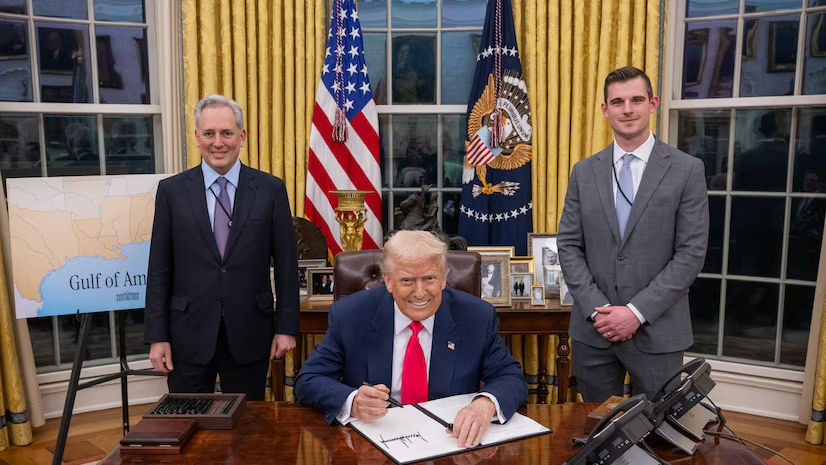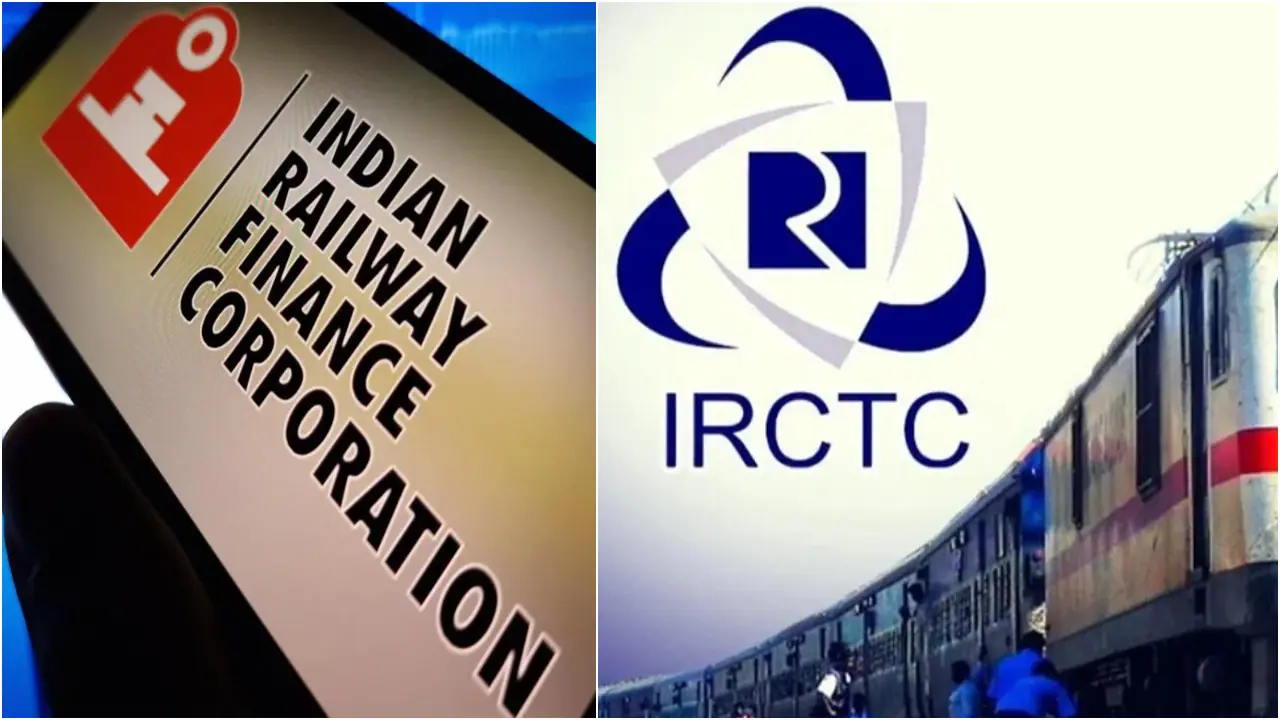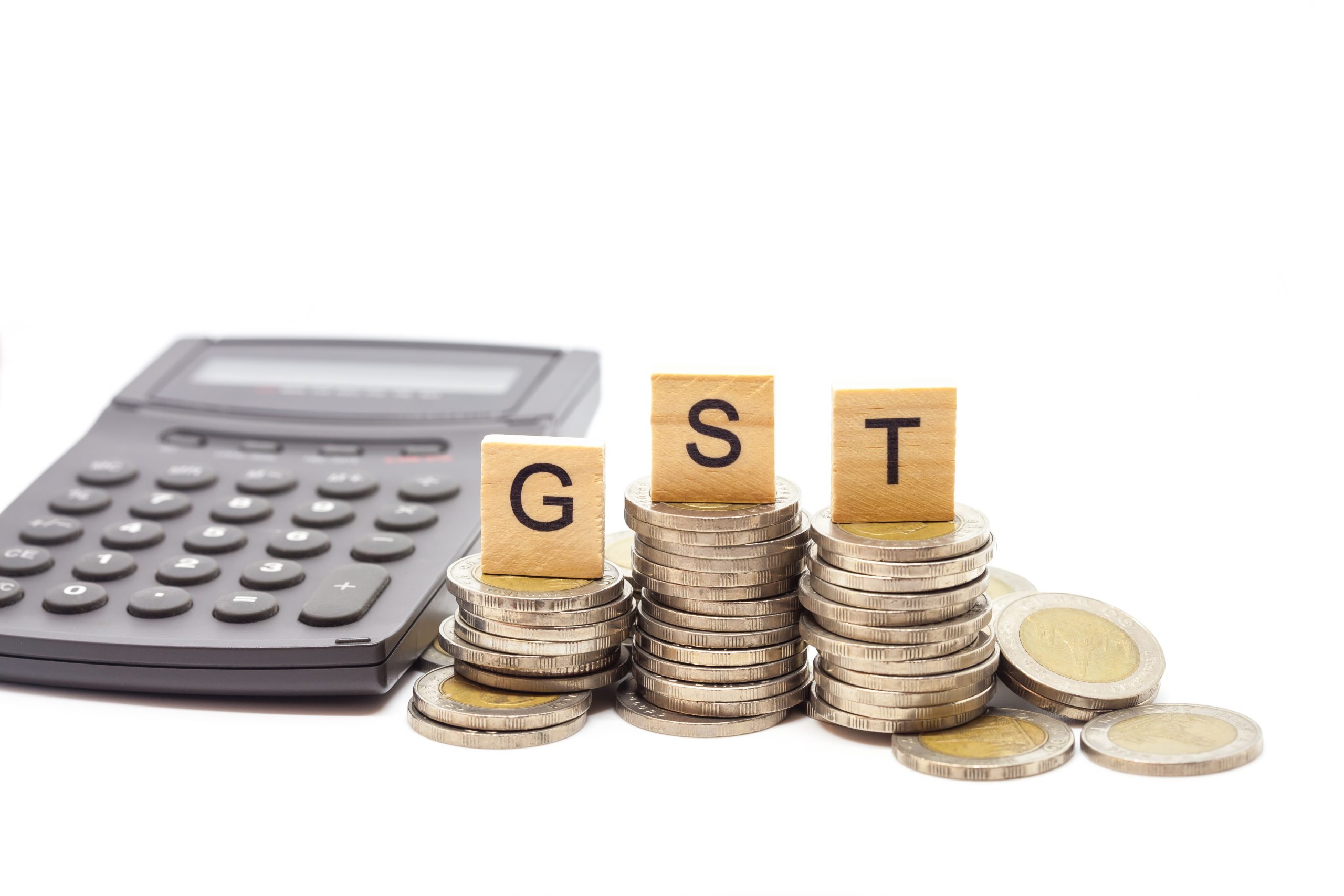- Courses
- GS Full Course 1 Year
- GS Full Course 2 Year
- GS Full Course 3 Year
- GS Full Course Till Selection
- Answer Alpha: Mains 2025 Mentorship
- MEP (Mains Enrichment Programme) Data, Facts
- Essay Target – 150+ Marks
- Online Program
- GS Recorded Course
- Polity
- Geography
- Economy
- Ancient, Medieval and Art & Culture AMAC
- Modern India, Post Independence & World History
- Environment
- Governance
- Science & Technology
- International Relations and Internal Security
- Disaster Management
- Ethics
- NCERT Current Affairs
- Indian Society and Social Issue
- NCERT- Science and Technology
- NCERT - Geography
- NCERT - Ancient History
- NCERT- World History
- NCERT Modern History
- NCERT Medieval History
- CSAT
- 5 LAYERED ARJUNA Mentorship
- Public Administration Optional
- ABOUT US
- OUR TOPPERS
- TEST SERIES
- FREE STUDY MATERIAL
- VIDEOS
- CONTACT US
Railways infrastructure in India
Railways infrastructure in India
14-03-2023
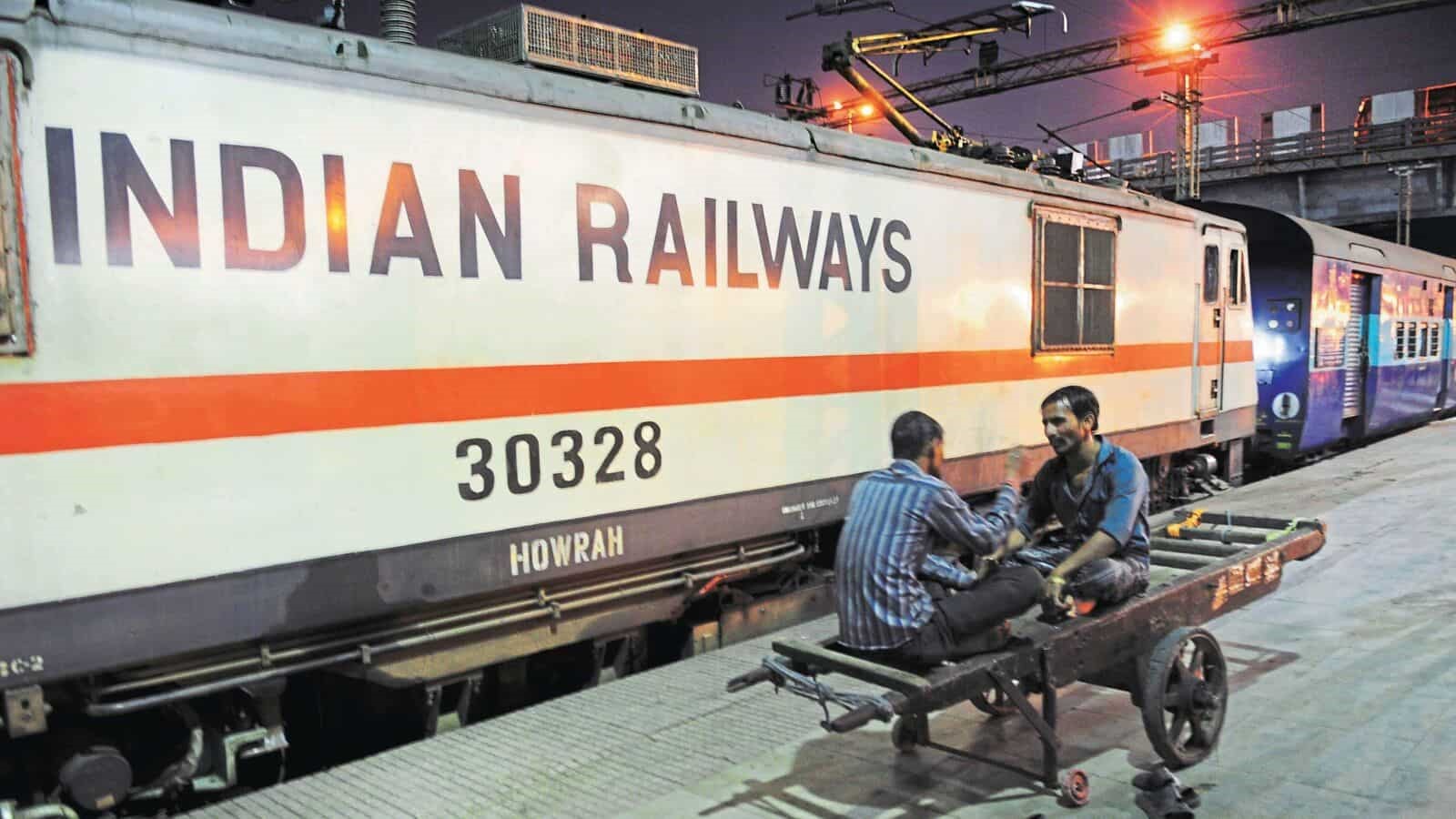
Railways infrastructure in India
Overview
Indian Railways is the largest rail network in Asia and the world's second-largest railway system under a single management.
Some facts about Indian Railways:
- Network: Indian Railways covers a distance of over 67,000 km and operates on more than 7,000 stations. It connects almost all parts of the country and transports millions of passengers and goods every day.
- Employees: Indian Railways is one of the largest employers in the world, with over 1.4 million employees. It is also the eighth largest employer in India.
- Passengers: Indian Railways carries over 23 million passengers every day, which is equivalent to the population of Australia. In a year, it carries more than 8 billion passengers, which is more than the population of the entire world.
- Freight: Indian Railways carries over 3 million tonnes of freight every day, which is equivalent to moving the entire population of Mumbai every day. In a year, it transports more than 1 billion tonnes of freight.
- Revenue: Indian Railways is one of the largest revenue generators for the Indian government. In 2019-20, it generated a revenue of over INR 1.9 trillion (approximately USD 25 billion).
- Technology: Indian Railways has introduced several technological advancements in recent years, such as the use of GPS-based train tracking, online reservation system, and bio-toilets in trains.
- Heritage: Indian Railways has a rich heritage, with some of its trains and stations being over a century old. The Darjeeling Himalayan Railway and the Nilgiri Mountain Railway are UNESCO World Heritage Sites.
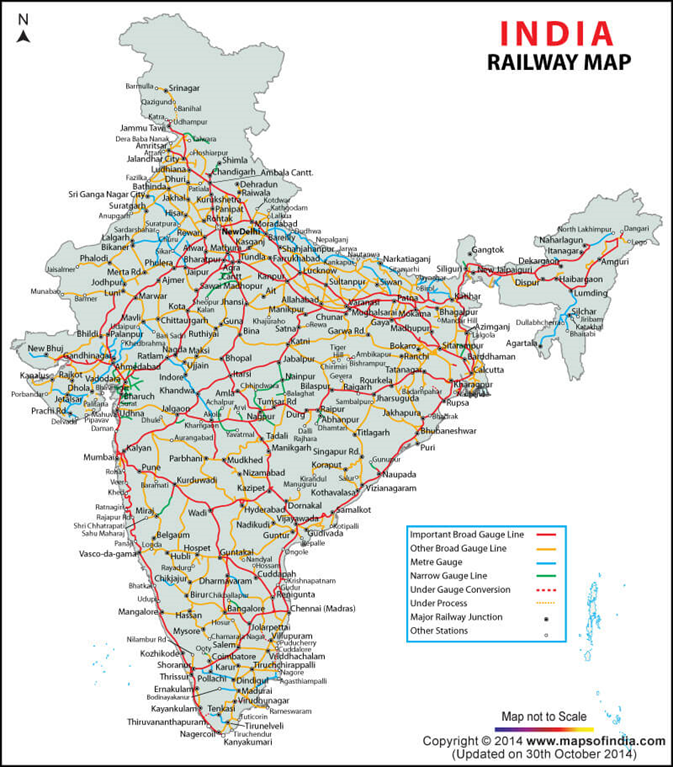
Contributions of Indian Railways for the country
- Connectivity: Indian Railways connects almost all parts of the country, including remote and inaccessible areas, to the rest of the country. It provides an affordable mode of transportation for millions of people, especially in rural areas, who otherwise may not have access to transportation.
- Employment: Indian Railways is one of the largest employers in the country, providing direct and indirect employment to millions of people. It is a significant source of livelihood for people in both urban and rural areas.
- Goods Transportation: Indian Railways is a lifeline for the country's economy, transporting millions of tonnes of goods every year, including raw materials, finished goods, and agricultural produce. It is a cheaper and more eco-friendly mode of transportation compared to road transportation.
- Revenue: Indian Railways is one of the largest revenue generators for the Indian government, contributing significantly to the country's GDP. The revenue generated by Indian Railways is used for the development of new infrastructure, improving the quality of services, and modernizing the existing system.
- Tourism: Indian Railways is a significant contributor to the country's tourism industry, with several heritage trains and luxury trains that offer tourists a unique travel experience. The rail network also connects several tourist destinations, making it easier for people to travel within the country.
- National Integration: Indian Railways plays a vital role in promoting national integration by connecting different regions of the country and facilitating the movement of people across different states. It also helps in promoting cultural exchange and promoting unity in diversity.
Challenges faced by Indian Railways
- Capacity Constraints: Indian Railways is one of the busiest railway networks globally, with over 23 million passengers and more than 3 million tonnes of freight moved daily. However, the capacity of the network is limited, leading to overcrowding and delays. According to the Indian Railways Annual Report 2020-21, around 59% of the mail/express trains ran at a delay of more than 15 minutes in the year 2019-20.
- Safety: Indian Railways faces significant safety challenges, with a high number of accidents and incidents. In the year 2019-20, Indian Railways recorded 59 train accidents and 219 consequential train derailments. These accidents resulted in 120 fatalities and 2,290 injuries, according to the Annual Report of the Ministry of Railways.
- Infrastructure: Indian Railways has an extensive network of tracks, stations, and other infrastructure, but most of it is old and in need of modernization. The infrastructure is also insufficient to cater to the growing demand for transportation. According to a report by the Indian Institute of Management Ahmedabad, the Indian Railways needs to invest around Rs. 50 lakh crores ($676 billion) in the next 30 years to upgrade its infrastructure.
- Funding: Indian Railways is facing funding constraints due to the high cost of infrastructure development and modernization. The government provides most of the funding, and the Railways depend on internal resources to fund its operations. According to the Indian Railways Annual Report 2020-21, the Railways' gross revenue for 2019-20 was Rs. 2,16,098 crores ($29 billion), out of which the operating expenses were Rs. 1,73,872 crores ($23 billion).
- Competition: Indian Railways faces competition from other modes of transportation, such as roadways and airways. According to the Annual Report of the Ministry of Railways, the market share of Indian Railways in freight transportation declined from 89.6% in 1950-51 to 27% in 2019-20. The competition has put pressure on Indian Railways to improve its services and become more competitive.
- Human Resources: Indian Railways is facing a shortage of skilled human resources, especially in critical areas such as safety, maintenance, and operations. According to the Indian Railways Annual Report 2020-21, the sanctioned strength of employees for Indian Railways was 15.06 lakh as of March 2020, out of which 12.09 lakh were filled, resulting in a vacancy of 19.7%.
Significance and necessity of the railway reforms
- Growth in the economy: In order for IR to meet the requirements of a $5 trillion economy, reforms are required. In order for IR to make a substantial contribution to the development of India, it requires engineering and administrative reforms to raise costs and reduce environmental impact.
- Departmentalism: The Rail route Board is IR's pinnacle dynamic body. It is divided into departments like traffic, finance, mechanical, and electrical, which are separated vertically from top to bottom. Because of these lines of separation, IR became a complicated organization with too many departments and inefficient decision-making. The recent IR restructuring reforms, which included reorganizing the Railway Board and combining the existing Group A services into an Indian Railway Management Service (IRMS).
- Reforms to the government: The structure of management must be drastically simplified. The recommendation of the Debroy committee to divide IR's core functions (rail operations) from its non-core functions (medical, schools, protection force, etc.) makes a lot of sense. Additionally, the Debroy committee recommends a revised governance structure with decision-making authority and some distance from the government.
- Modernisation: Indian Railways has been unable to expand at the rate required by India and keep up with infrastructure and service modernization. Equipment, procedures, and training all need to be updated in almost every sector of the railways, which has been the case for decades. As a result, the railways continue to consume public funds while providing essential services inefficiently.
- Safety: India has a lot of rail accidents. Railways were responsible for 16 deaths in 2018-19, 28 deaths in 2017-2018, and 195 deaths in 2016-2017. The Kakodkar committee had proposed establishing a statutory railway safety authority and investing Rs 1 lakh crore over five years.
Privatization of the Railways
- Through 151 new trains, the Indian Railways started the process of allowing private companies to operate passenger trains on its network. This marks the beginning of private sector participation in passenger train operations, even though these trains will comprise a negligible portion of the entire railway network.
- The former Planning Commission of India and the current Niti Aayog have both recommended privatizing Indian railways for a number of decades.
- In the public transportation industry, which is still controlled by the government, allowing new operators to enter may be the way to improve services and encourage growth. However, there are advantages and disadvantages to privatization as a concept.
Targets of the drive:
- to introduce modern rolling stock that requires less upkeep.
- Speed up the journey.
- Boost employment growth.
- Provide increased security.
- Passengers should be treated to an exceptional travel experience.
- Reduce the passenger transportation sector's demand-supply imbalance.
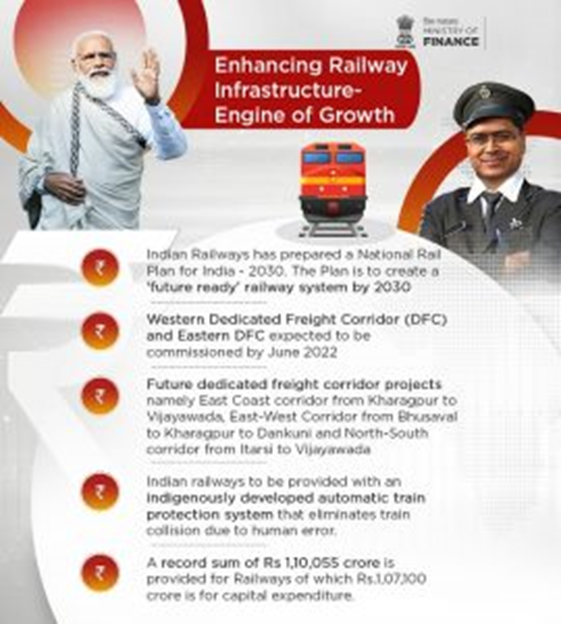
Benefits of Privatization of Indian Railways
- Improved Infrastructure: The Niti Aayog strategy for New India @75 includes a number of goals for railway infrastructure, such as electrifying 100 percent of broad gauge track by 2022-23 and increasing the speed of infrastructure creation from the current 7 km/day to 19 km/day.
- Because of this, a strong argument in favor of privatization is that it will result in improved infrastructure, which would improve safety, shorten travel times, and other benefits.
- Improved Service Quality: There are problems with Indian Railway services like being late, mismanagement that results in stale restrooms, a lack of water, and dirty platforms. These problems may be solved by privatization because it would increase competition and improve service quality overall.
- Infusion of Technology: The privatization will also make it easier to incorporate the most recent technology into railway coaches, improving safety and the travel experience. As a result, it may assist Indian Railways in developing into a world-class network.
Cons of privatization
- Limited Coverage to Lucrative Sectors: One benefit of Indian Railways being owned by the government is that it provides nationwide connectivity, which contributes to regional development. This wouldn't be imaginable with privatization since courses which are less well known might be dismissed, subsequently adversely affecting network.
- Additionally, it may exclude some areas of the country from the development process and render them virtually inaccessible. For instance, states in the Himalayas and the North Eastern United States have rugged terrain and low population densities.
- Increased Fees: Given that Indian Railways is a private business that relies on revenue, it stands to reason that raising fees would be the simplest way to increase profits. Because of this, people with lower incomes would not be able to afford the service. Additionally, this would be counterproductive to the goal of the Indian railways, which is to provide services to the nation's entire population regardless of income.
- Problem of Cross-Subsidization: Indian Railways typically use freight revenue to cross-subsidize passenger fares. Private players will have a hard time competing as a result of lower pricing as a result.
- Conflict of Interest: At the moment, the Ministry of Railways is essentially the provider of services, regulator, and policy. The Bibek Debroy committee pointed out that this is a clear conflict of interest, would hinder the effective privatization of Indian Railways, and would make it harder for private and government railway operations to compete fairly.
- Concerns for social welfare: The Indian Railways provide low costs for the transportation of many final and intermediate goods because they play a crucial role in the country's goods transportation. As a result, the common people will be impacted by the inflationary effects of the system privatization driven by profit-seeking.
Steps to reform Indian Railways
- Separation of Rail Budget: In 2017, the government separated the Rail Budget from the Union Budget, which was aimed at improving financial transparency and accountability of the Indian Railways.
- Setting up of Dedicated Freight Corridors (DFC): The government is constructing DFCs for freight movement between Delhi and Mumbai, and Delhi and Kolkata. These corridors are expected to reduce transit time, congestion, and accidents, and improve the competitiveness of Indian Railways.
- Restructuring of Railway Board: The government has approved the restructuring of the Railway Board, which aims to improve the efficiency and decision-making of Indian Railways. The Board will now have four members, including the Chairman, and will focus on specific areas such as infrastructure, operations, and finance.
- Public-Private Partnership (PPP) Model: The government has encouraged private participation in the development of Indian Railways through the PPP model. It has initiated projects such as the development of railway stations, setting up of locomotive factories, and introduction of high-speed trains through the PPP model.
- Modernization of Signaling and Telecommunication: The government is investing in modernizing signaling and telecommunication systems to improve safety and efficiency. The introduction of the European Train Control System (ETCS) is expected to improve safety, reduce accidents, and enable high-speed trains in the future.
- Train Operations and Management System (TOMS): The government has introduced TOMS, an IT-enabled system for efficient management of train operations. It is expected to improve the punctuality of trains, optimize resource utilization, and reduce costs.
- Improvement in Passenger Services: The government has introduced several measures to improve passenger services, such as the introduction of bio-toilets, online ticketing, and e-catering services. It is also planning to introduce modern coaches with improved amenities and safety features.
Programmes launched
- Construction of Dedicated Freight Corridors: are The purpose of the DFCs is to increase the proportion of freight traffic. They should be functional by 2022. However, completion is anticipated for 2023 and 2024. DFCs consist of 2 corridors:
- Western Dedicated Freight Corridor (WDFC): Mumbai-to-Uttar Pradesh
- The Eastern Dedicated Freight Corridor (EDFC): Dankuni in West Bengal with Ludhiana in Punjab.
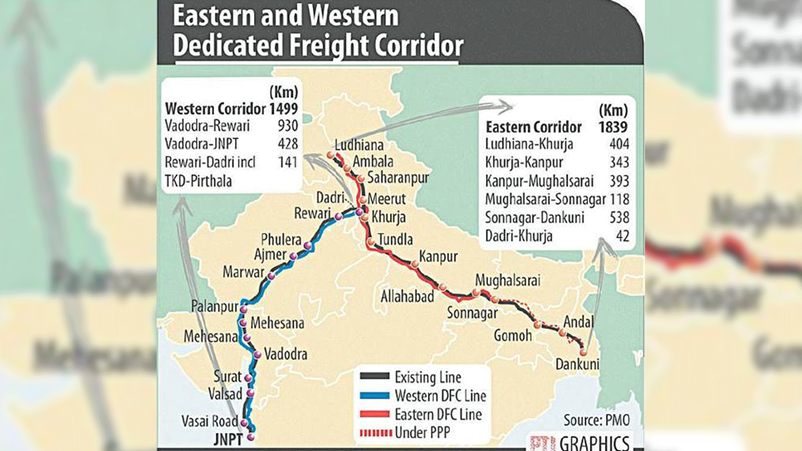
- Rail Kisan: The beginning of 'Kisan Rail' is one more significant drive to further develop the cargo business overall and give a push to ranchers specifically. Over 49,000 tonnes of goods are being transported by 157 trains on eight routes under this program.
- Program for the Redevelopment of Station Infrastructure: The Public authority of India has sent off the station redevelopment program, which intends to redevelop 400 rail route stations across India for INR 1,000 billion under a public-private organization (PPP) model. The program will attempt to foster self-supportable railroad stations with elevated expectations of wellbeing, solace, easy to understand traveler conveniences, esteem added administrations and effectiveness by embracing the best mechanical practices.
- Connecting the Mining Districts and the North East: As part of inclusive development, the North-east's railway connectivity is being improved. Broad gauge is being connected to the entire North-East (NE) rail network. The Northeastern States' major cities are being connected by rail. Additionally, the Railways have launched the "Mission Hungry for Cargo" initiative, which aims to increase the modal share of freight transportation from the current 27% to 45%. In addition, the country's railways are mapping mining districts to improve their railway connectivity.
- Quest for Self-reliance: As part of "Atma Nirbhar Bharat," "Kavach," an indigenously developed anti-collision system with world-class technology to prevent accidents, will cover 2,000 kilometers of the rail network. Kavach will assist the railways in achieving their objective of zero accidents. Indian Railways plans to introduce 400 new-generation, highly energy-efficient "Vande Bharat" high speed trains within the next three years, with the goal of improving the passenger experience. The quick implementation of these initiatives ought to be the focus.

Bibek Debroy Committee
The Bibek Debroy Committee was formed in 2014 by the Ministry of Railways to suggest measures for the restructuring of the Indian Railways. The committee submitted its report in 2015, and some of its key recommendations are:
- Restructuring of Indian Railways: The committee recommended the restructuring of Indian Railways into a government-owned company, which would have more autonomy in decision-making and financial management.
- Creation of Regulatory Framework: The committee suggested the creation of a regulator for Indian Railways, which would oversee tariff setting, infrastructure development, safety, and service standards.
- Privatization of Railway Operations: The committee recommended the gradual privatization of railway operations, starting with the outsourcing of non-core services such as catering, cleaning, and maintenance.
- Investment in Infrastructure: The committee suggested that Indian Railways should invest in infrastructure development to improve connectivity, safety, and efficiency. It recommended the construction of dedicated freight corridors, high-speed trains, and electrification of the railway network.
- Tariff Rationalization: The committee recommended the rationalization of freight tariffs to encourage the transport of bulk commodities by rail, which would increase revenue for Indian Railways.
- Cost Cutting Measures: The committee suggested cost-cutting measures such as reduction in staff strength, elimination of redundant posts, and streamlining of administrative procedures.
- Restructuring of Human Resources: The committee recommended the restructuring of human resources in Indian Railways to improve productivity, skill development, and performance management.
- Use of Technology: The committee suggested the use of technology for improving safety, efficiency, and passenger services in Indian Railways. It recommended the introduction of Automatic Train Control System (ATCS), Electronic Ticketing Machines (ETMs), and Train Management System (TMS).
The Bibek Debroy Committee's recommendations aim to modernize and reform Indian Railways to make it more efficient, safe, and competitive. However, the implementation of these recommendations has been slow, and many of the proposals are still under consideration.
TO ACCESS ALL THE GENERAL STUDIES NOTES CLICK ON: https://ensureias.com/notes


